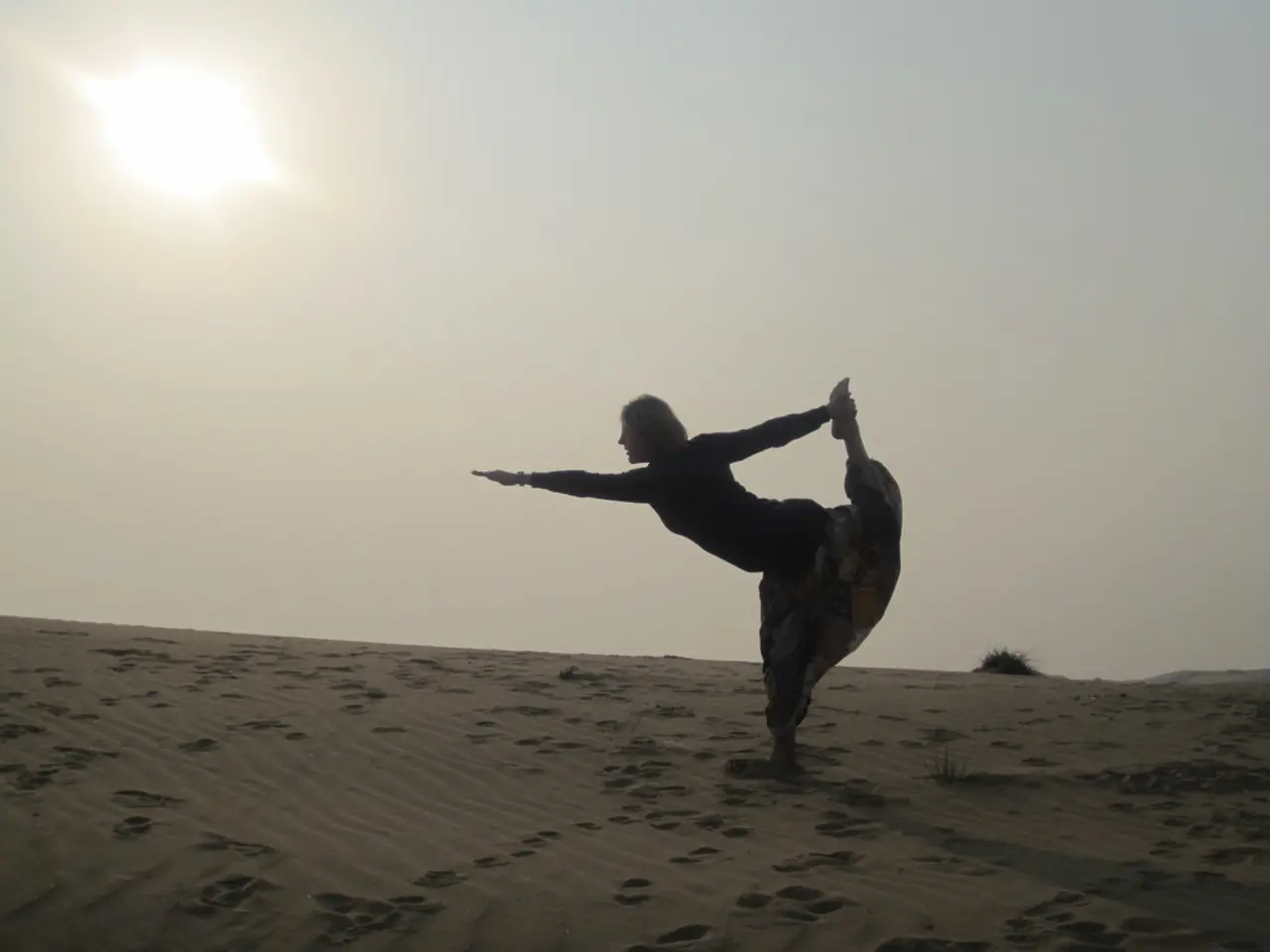Yoga's Impact on Alleviating Chemotherapy Adverse Reactions
Yoga has emerged as a valuable adjunct therapy for cancer patients undergoing chemotherapy, providing relief from the physical, emotional, and spiritual distress associated with the treatment [1][2][4]. The practice, which includes physical postures, breathing exercises, and meditation, helps reduce symptom burden, improve quality of life, and enhance physical and mental well-being.
One of the key roles of yoga in this context is reducing symptom burden. Studies, including randomized controlled trials, show that pranayama breathing exercises, a key component of yoga, help lower the severity of chemotherapy-induced symptoms in breast cancer patients, such as fatigue, emotional distress, and breathing difficulties [2][4].
Yoga improves adherence to cancer treatment and enhances overall physical and mental health by promoting relaxation, reducing stress and anxiety, and fostering a better mind-body connection [1][2]. In managing fatigue, yoga and breathing exercises reduce cancer-related fatigue by influencing physiological factors like oxygen supply and nervous system balance, which are often disrupted during chemotherapy [2][3].
Evidence-based yoga programs for cancer patients are designed to meet their unique needs, ensuring interventions are safe, practical, and accessible [1]. These programs can help regain strength and flexibility, diminish sensations of pain throughout chemotherapy treatment, and promote stable moods and enhanced sleep. Improved circulation, essential for healing and a better quality of life, is another factor promoted by yoga.
It is important to note that yoga should be performed under a trained instructor with knowledge of the cancer care landscape. Yoga is not an alternative to medicine but an aid in symptom management and health improvement. Each patient's needs and medical considerations should be approached individually, and the practice should be tailored accordingly.
Chemotherapy causes significant physical and psychological stress in patients. By providing relief from stress, anxiety, and fatigue, yoga may assist in fostering a patient's healing during chemotherapy. Overall, yoga acts as a complementary intervention alongside standard medical treatments, supporting the management of chemotherapy side effects and improving well-being in cancer patients [1][2][4].
References:
[1] Aizenstein, H. J., & Tannenbaum, C. F. (2018). Integrative oncology. New York, NY: Oxford University Press.
[2] Barnes, P. M., & Bloom, B. (2008). The scientific validation of mind-body medicine. American psychologist, 63(4), 257.
[3] Cramer, H., Lauche, R., Dobos, G., & Langhorst, J. (2013). A systematic review and meta-analysis of yoga for breast cancer. Journal of clinical oncology, 31(28), 3744-3751.
[4] Keng, S. L., Smits, J. A., & Brown, C. A. (2011). Mindfulness-based stress reduction for the management of cancer: emphasis on psychosocial and spiritual benefits. Journal of psychosocial oncology, 29(2), 117-126.
- Yoga, along with its components like pranayama breathing exercises, serves as a beneficial adjunct therapy for cancer patients, offering relief from physical, emotional, and spiritual distress during chemotherapy.
- Evidence-based yoga programs for cancer patients aim to alleviate fatigue, manage stress and anxiety, and promote relaxation, all of which contribute to improved overall physical and mental health.
- Yoga, through its influence on physiological factors like oxygen supply and nervous system balance, can help reduce cancer-related fatigue in patients undergoing chemotherapy.
- The implementation of yoga in cancer care should be undertaken with guidance from a trained instructor, as it acts as a complementary intervention alongside standard medical treatments and is not an alternative to medicine.
- Beyond physical benefits, yoga and its associated therapies and treatments also play a crucial role in addressing mental health needs, fostering a better mind-body connection, and promoting stable moods and enhanced sleep for cancer patients.




